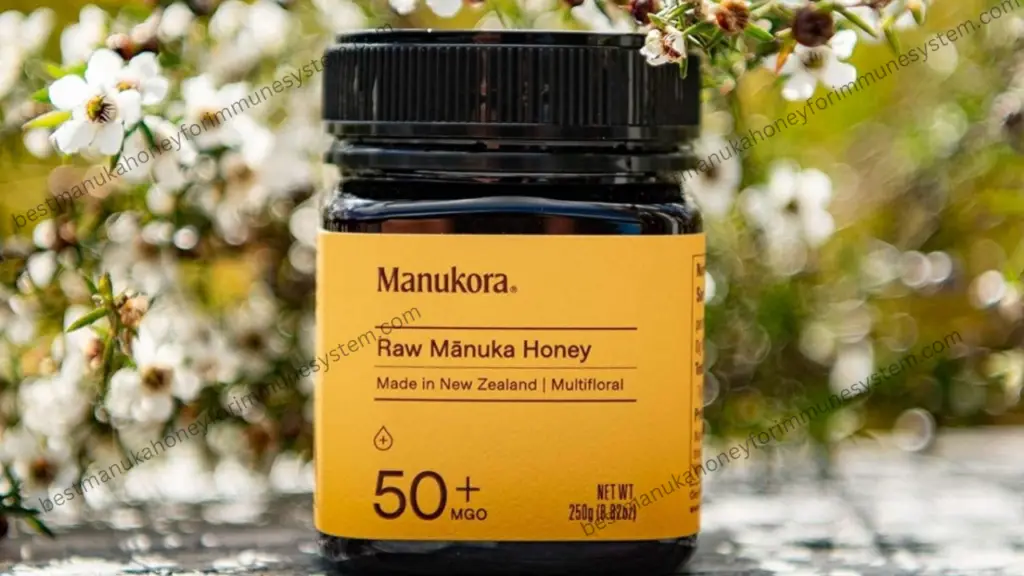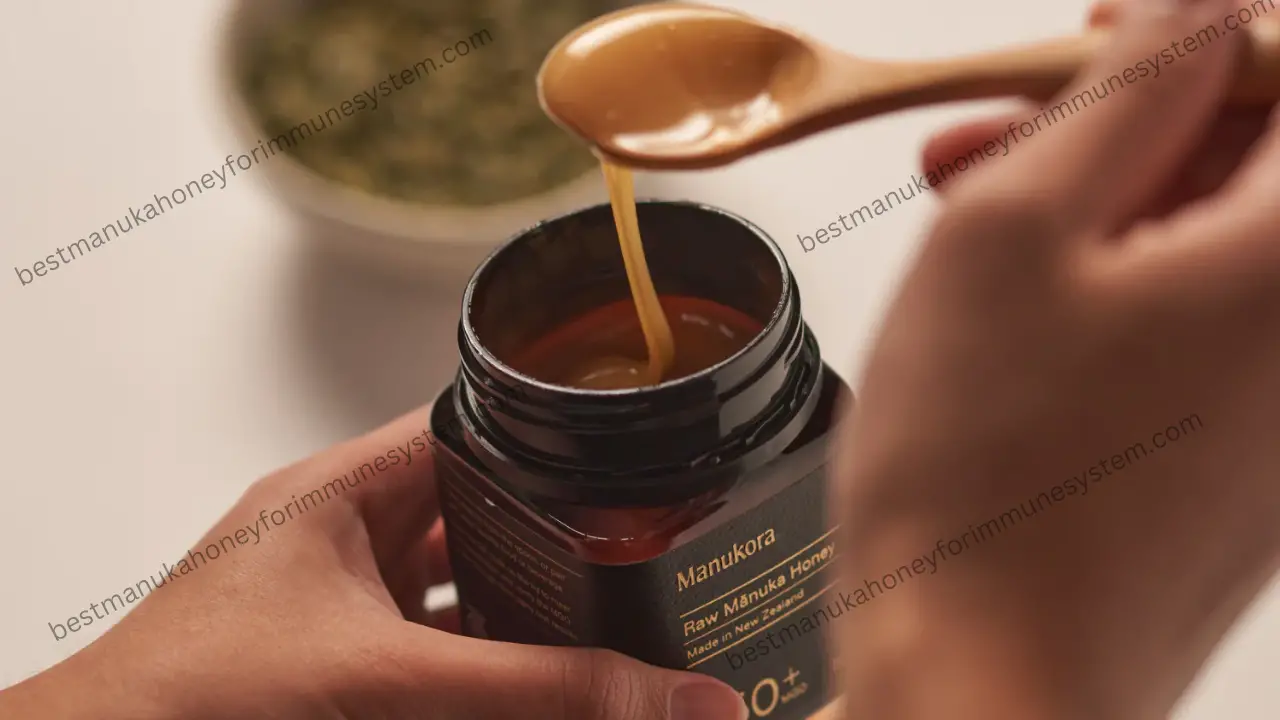Have you ever wondered why Manuka honey is so sought-after, so expensive, and difficult to find in high quality?
Perhaps a look at how this special honey is produced will give you some perspective.
Manuka honey is produced through a very delicate process in a very specific part of the world, from a very specific plant! In fact, if luck is not on our side, some years it is not be possible to produce manuka honey at all.
NECTAR FROM MANUKA FLOWERS
Manuka honey production begins when the Manuka tree begins to flower, usually from mid-December to mid-January in New Zealand.
The hives are placed in an area with a high concentration of wild Manuka trees, and the bees are on site and ready to forage as soon as nectar becomes available.
Foraging bees are known as “worker bees” and are typically bees that are in the last half of their adult life.
They visit flowers and collect nectar by sucking it with their proboscis. This is a small part of their anatomy that closely resembles an elephant’s trunk. Thanks to this “trunk”, bees are extremely efficient at collecting nectar from flowers and plants.
Honey bees are also a constant species, meaning they generally visit the same species of flowers during each foraging trip. However, during a single trip, they can visit more than a hundred flowers, depending on the bee. Being a constant species is very beneficial for the ecosystem because the pollen that bees attach to is also found in other flowers they visit.
The nectar is stored in a sac near the bee’s stomach, which can swell considerably, giving the bee the ability to carry a large amount of nectar back to the hive. Once full, the bag can weigh up to 85% of the bee’s total weight! Think about how incredibly strong an insect of that size must be to carry 85% of its weight in food.
It is important to note that the collection of this nectar is carried out only a few weeks a year! The manuka flower blooms only in a very short period of a few weeks. It also depends a lot on the weather conditions, so it is possible that in a few years there will be no more Manuka production.

BACK TO THE HIVE!
Once the bee has collected enough nectar from the Manuka flower, it will begin the journey back to the hive.
In the hive, honeybees (the youngest bees) await the arrival of the worker bee to collect the honey contents. Once the worker bee arrives at the hive, she delivers the bag of nectar.
The task of bees in the hive is to start moving nectar into the cells of the honeycomb and deposit it together with enzymes.
Honey bees add enzymes and process the nectar, which is then passed in a chain from bee to bee.
This process changes the pH and several chemicals found in honey, resulting in a mixture of nectar and enzymes. However, it’s still not honey! It is too liquid and the consistency is runny.
The bees must therefore dry the honey so that it can be stored longer.
DRYING THE HONEY
For effective drying, the honey is partially dried and removes excess moisture as it moves along the line of bees processing the nectar.
Bees are extremely intelligent.
They will actively spread the honey onto the comb to increase the surface area, much like hanging out your laundry so it spreads well in the sun. The movement of the bees, especially the flapping of their wings, also aids the drying process. By ventilating the air around the colony, they can heat it up to around 34 degrees Celsius.
This process helps reduce the water content, which increases the viscosity and consistency of Manuka honey.
Incoming nectar is approximately 70% water, which must have evaporated to 20% or less to turn the nectar into honey.
To achieve this, worker bees will ventilate the colony until the humidity level is between 30 and 50%. Then the second phase will begin: they will deposit the semi-dried honey in small droplets in the cells of the hive and leave it to dry further.
MAKING THE HONEYCOMB
The final stage of Manuka honey production involves sealing the honey into cells that make up the unique shape of the honeycomb.
Bees understand that honey needs to be stored, and as I said before, they are very intelligent!
To facilitate storage, once the target humidity level of 20% is reached, they cover each cell with beeswax, which keeps the honey safe until harvest. Think of this like putting a lid on a jar.
This 20% humidity limit is important in part because it prevents yeast spores in honey from hatching and surviving. Without this, the honey fermentation process will begin, producing alcohol, which is toxic to bees. Without forgetting that the sugars contained in honey are an essential nutrient for them!
It should also be noted that when collecting nectar, foraging bees also do another very important thing: they add a special substance called invertase to the nectar, and the bees in the hive also continue to add this substance during the drying process. This invertase breaks down sugar molecules in sucrose-rich nectar, splitting it into fructose and glucose.
Now what does this mean? Essentially, the bees have “pre-digested” the sugars, which then provide them with instant energy.
Fun fact: the same goes for humans! If we eat sucrose, our stomach acids break it down into glucose and fructose before we can turn it into blood sugar and therefore energy. However, when we eat honey, the bees are already making it for us, so we can use these sugars right away.
Finally, during this process, bees add one last enzyme to the honey. This is called glucose oxidase and is the enzyme that produces the hydrogen peroxide in honey. It is this hydrogen peroxide that remains in honey until consumed and gives most honeys their antibacterial effect.
(Don’t forget that Manuka honey also has NPA, or “non-peroxide activity,” which refers to antibacterial effects in addition to hydrogen peroxide. That’s what makes it so powerful!)
Once the bees have covered the honey cells with beeswax and the honey is fully ripe and dried, harvesting can begin.
HARVESTING THE MANUKA HONEY
Beekeepers will remove the comb frames from the hives and carefully extract the honey.
In most commercial operations, a centrifugal force machine is used that rotates the frames to remove the honey.
However, for very small operations, like on our family farm, it is possible to do the entire process manually.
After extraction, the honey undergoes a series of filtration and processing steps to remove any remaining impurities, such as bits of wax or bee parts. This ensures that the honey is pure and ready to consume.
Finally, the honey is tested to determine its unique Manuka Factor (UMF), which measures its antibacterial power. Manuka honey is prized for its high UMF, attributed to the presence of methylglyoxal (MGO) and other compounds.
You can learn more about how Manuka honey is classified here.
So it’s potted and ready to be eaten by people like you and me!
Because the Manuka tree’s flowering season is limited and weather conditions are critical during the 4-6 weeks that the Manuka tree is typically in flower each year, Manuka honey is not always easy to find, especially if it is of high quality.
We recommend that you always purchase your manuka honey from a reputable UMF certified brand, to ensure you are getting pure, authentic, unadulterated honey. We’ve looked at each of New Zealand’s biggest brands – you can see our ranking here!
Thanks for reading. ❤️🐝🍯

